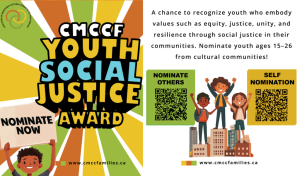Research Applied to this project model:
In recent years, Canadians have expressed a desire for the communities that they live in to be healthier, safer, and more welcoming. Recent research highlights a growing concern among Canadians regarding violence, with a significant majority feeling that violence will increase in the future. The IPSOS poll (March 2023) reveals that younger Canadians feel less safe than they did a year ago, and the breakdown of common values and social cohesion is seen as a leading cause of this rise in violence. Racism, discrimination, and inequality are also significant contributing factors.
In addition to these societal issues, a recent review conducted by RESOLVE at the University of Manitoba (in partnership with CMCCF) underscores the particularly high levels of family and intimate partner violence in Manitoba. It also notes that immigrants and newcomers often face cultural barriers and negative experiences that discourage them from seeking help, pointing to a lack of cultural awareness and sensitivity within service provision. As immigrants represent about 20% of Manitoba’s population, these barriers are a significant issue for the province.
CMCCF, through its cultural community engagements, has heard repeated concerns from community members about violence, both within their communities and homes, and about racism and discrimination they experience in broader society. These voices call for peace within and between communities and emphasize the need to reduce the harmful impact of racism and discrimination.
In light of these findings, CMCCF supports the Canadian Public Health Association’s recommendation for communities to define their own needs and create programs aimed at becoming violence-free. However, CMCCF also advocates for a shift in focus toward peacebuilding, safety, and conflict resolution. By leveraging the strength and traditional wisdom of cultural communities, CMCCF aims to foster social cohesion, belonging, and peace. This peacebuilding approach aligns with the vision of using cultural community structures as key tools for addressing violence and promoting harmony, thus linking back to CMCCF’s broader mission of reducing tension, conflict, and discrimination while advancing social justice and human dignity.
The connection to CMCCF’s peacebuilding strategy is clear: rather than merely reacting to violence, there is an opportunity to be proactive by embracing traditional community methods for fostering and sustaining peace, rebuilding social cohesion, and creating inclusive environments. This approach underscores the leadership role that cultural communities can play in addressing not just violence, but the underlying issues of inequality and discrimination.
Our Cultural Community Models to be explored to align with contemporary use of these approaches in Manitoba and the potential influence on western-centric models of community engagement toward family and community peace.
The community focus of CMCCF’s proposed peacebuilding model draws from traditional cultural approaches to conflict resolution and decision-making, particularly through the metaphor of the “Palaver Hut,” a concept introduced by a partner organization. Rooted in African traditions, the Palaver Hut symbolizes communal discussions aimed at resolving conflicts and promoting inclusivity. This concept resonates with CMCCF’s vision of fostering peace, not violence, within communities, emphasizing inclusivity, participation, and decision-making.
The model extends to various cultural traditions, emphasizing peacebuilding through dialogue and traditional conflict resolution mechanisms. It includes:
- South and South-Asian Communities:
- Panchayats in India: Village self-governing bodies that resolve social, economic, and legal matters.
- Shuras in Afghanistan: Community councils focused on conflict resolution and development.
- Caribbean Communities:
- Big Drum Gatherings in Trinidad and Tobago: Events combining music, storytelling, and discussions for community cohesion.
- Nine Night Ceremonies in Jamaica: Community gatherings after a death, involving support, storytelling, and celebration.
- African Communities:
- Palaver Huts in West Africa: Spaces for dialogue and conflict resolution.
- Baraza in East Africa: Community gatherings for open dialogue and decision-making.
By adopting these traditional cultural structures, CMCCF aims to facilitate a space where communities can engage in meaningful “hard talks,” addressing internal conflicts and outward challenges related to racism and discrimination. This approach helps create safer spaces for cultural communities to explore peacebuilding, reducing feelings of alienation and strengthening inclusion.
Geographically, the focus is on engaging communities in Winnipeg, but it also draws lessons from cultural practices in South and South Asia, the Caribbean, Africa and other areas of the world. These traditional methods are envisioned to contribute to peacebuilding within Manitoba and across Canada by shifting attention from simply challenging violence to fostering peace, safety, and well-being at individual, family, and community levels.
This initiative aligns with CMCCF’s Justice, Equity, Diversity, and Inclusion (J.E.D.I.) lens, demonstrating that cultural communities can play a proactive role in reducing racism and building more inclusive societies.


